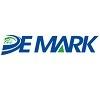Explore all the information on
Swine health
Pig diseases can be caused by bacteria, viruses, protozoa, nutritional deficiencies, poisonous substances, internal and external parasites.
Bacterial diseases include swine erysipelas, swine dysentery, infectious poly-arthritis etc. Viral and mycoplasma diseases include African swine fever, swine influenza, enzootic pneumonia of pigs, vesicular exanthema of swine, transmissible gastroenteritis etc. Helminthiasis as a health problem in pigs is mainly caused by worms like the lungworm, ascaris worm etc. Nutritional diseases include piglet anemia, parakeratosis etc. External parasitic infections include mange, lice, jiggers etc.
How to tell that a pig is in bad health:
General signs: dullness, loss of appetite, labored or rapid breathing, sudden deaths, loss of weight, low weight gain and fever usually manifested by shivering of the pig.
Signs expressed on the skin: reddening of the skin or skin discoloration, loss of hair and hardening of some parts of the skin, itching and cracking of the skin.
Other signs: lameness, cough, abnormal nasal discharges, diarrhea with a putrid smell, abnormal content and color of feces and abortions.
Introduction Porcine circoviruses (PCVs) are members of the genus Circovirus included in the family Circoviridae, which comprises small icosahedral non-enveloped viruses with a circular single-stranded DNA (ssDNA) genome. There are two types of PCV, namely PCV1 and PCV2. PCV1 is a non-cytopathic contaminant of the PK15 cell line that was first identified in 1974 and described...
Comments : 0
Recommendations: 0
Neonatal diarrhoea in piglets is very common in farrowing units and has been a concern to vets for a number of years.
Associations between pathogenic agents (colibacilli, clostridia, enterococci, parasites...) complicate the diagnosis making laboratory analyses become essential. Against such pathology, classical vaccine solutions are limited. In most of the cases, veterinarians have to set up early preventive antibiotic...
Comments : 0
Recommendations: 0
Since Pleuropneumonia once established on a farm becomes a problem due to high mortality and growth retardation in pigs, it is very important to choose the most desirable method for the prevention and control of this disease, considering financial cost and disease outbreak. What would be the best alternative? Look forward to hearing your opinions! ...
Comments : 5
Recommendations: 0
ABSTRACT This document focuses on the use of a program based on specific avian antibodies to neutralize PRRSV in a multisite farm of 1,100 swine in Central Mexico; farm stability is shown in S/P values. High values when starting program and a decrease as the program continues; also the samples as the program develops along with a repopulation in 2006 and 2007 with 700 replacement sows negative to PRRSV without S/P...
Comments : 0
Recommendations: 0
In 1982 a novel virus, subsequently named porcine circovirus (PCV), was identified by Tischer et al in 1892 (12). PVC is a DNA virus and member of the Circoviridae family. PCV infections may interfere with normal immune function (11). The first description of PMWS was in Saskatchewan in 1991 (6); this syndrome has now been described worldwide. Clinically the syndrome is characterized by wasting, paleness of the skin, dyspnea, diarrhea and icterus (jaundice). In 1997, the presence of...
Comments : 1
Recommendations: 0
The pathogenesis of porcine circovirus type 2 (PCV2) infections in pigs is still not completely understood. PCV2 has a tropism for lymphoid tissues where it is associated with depletion of follicles and histiocytic infiltration thereby accumulating in large numbers mainly in the cytoplasm of macrophages (1).PCV2 belongs to the Circoviridae family and is one of the smallest known single-stranded DNA viruses (2). Since the virus lacks its own enzymes,...
Comments : 2
Recommendations: 0


Speculation over the Provisional Ruling on Anti-dumping Duties of Lysine by the EU Against China
Suggested link
Escherichia coli (E. coli) are an important cause of disease in new-born and recently weaned piglets. In new-born piglets, severe watery diarrhoea can be caused by enterotoxigenic E. coli (ETEC) producing F4 (K88), F5 (K99), F41 and or F6 (P987) fimbriae. Colibacillosis in weaned piglets is the result of infection with F4+ or F18+ ETEC or F18+ verotoxigenic E. coli (VTEC). Besides fimbriae, ETEC produce thermolabile (LT), thermostable a (STa) and/or b (STb)...
Comments : 0
Recommendations: 0
Since parasites in commercial pig herds can cause economic loss to the producer in many ways including: decrease feed efficiency, increase time to market, and decrease carcass value. What would be the main procedures to be adopted to identify a worm problem? Look forward to hearing your experiences! ...
Comments : 6
Recommendations: 0
Veterinarians and pork producers can now help prevent Porcine Circovirus Type 2 (PCV2) viremia with the convenience of a single dose. New Fostera TM PCV from Pfizer Animal Health is the result of the company's commitment to best practices and continuous quality improvements.
"Nearly all pigs are exposed to PCV2 during their lifetime, so the goal is to create an environment with the least amount of virus present,"...
Comments : 0
Recommendations: 0
Dear users, I would like to invite you all to discuss the methods of reducing the incidence of stillborn piglets. Your participation will be welcome! ...
Comments : 4
Recommendations: 0
Salmonella control has a high priority in European pork production. It is a significant cause of human salmonellosis and causes major economic losses in the pork production chain, through reduced productivity, increased veterinary and hygiene control costs. Preventing the spread of salmonella to the consumer requires special control measures during slaughter and processing. The extra cost of these controls is increasingly being...
Comments : 0
Recommendations: 0
Lameness among sows may be and must be regarded as a loss-making disease. Lameness is not a common state for sows, and several international studies indicate losses due to lameness amounting to 50 - 100 Euros per sow. According to professor John Deen, University of Minnesota, loose sows increase the risk of lameness by a factor 25; this will consequently increase the lameness problematic in European pig production due to the fact that all sows as...
Comments : 1
Recommendations: 0
Antibiotic Associated Diarrhoea (AAD) is diarrhoea caused by antibiotic (ATB) supplementation and usually occurring during or following ATB treatment. This phenomenon is highly spread in hospitals or health care houses where patients usually contract diarrhoea when receiving ATB treatment. The major identified bacteria causing AAD is Clostridium difficile . Many C.diff infections can be observed in UK hospitals causing up to death of some patients, mainly...
Comments : 0
Recommendations: 0
Feedback from the usage of Levucell SB (LSB) in sow diets is rich of visible signs of success during the lactation period and around farrowing. However, these results are usually obtained after feeding LSB throughout the gestation phase whith no visible signs. Consequently, LSB is often perceived as a cost-increasing factor by nutritionist. Production trials allowing a chance to measure any improvement are very unlikely to be performed. Due to 'natural'...
Comments : 0
Recommendations: 0


Speculation over the Provisional Ruling on Anti-dumping Duties of Lysine by the EU Against China
Suggested link
Dr. Kenneth Mellits from the University of Nottingham at Lallemand Technical Conferencetalks about Antibiotic Associated diarrhea in piglets....
Comments : 0
Recommendations: 0
It is widely recognized that a large variation in productivity and profitability exists between farms in a country, and similarly, between countries in a global economy. Some profitability variables are due to cost of inputs and management and these are controllable by producers; other factors are not so easily predicted or controlled, for example: 65% of income variation is estimated to be due to: Feed conversion, ...
Comments : 0
Recommendations: 0
Introduction Through the late 1990's and on into the present century the global swine industry experienced very profound changes. The price crash in 1997/98 was especially traumatic and the outbreaks of CSF and FMD were also particularly damaging. A new emerging disease that became known as Post-weaning Multi-systemic Wasting Syndrome (PMWS) and its related Post-weaning Dermatitis Nephropathy Syndrome (PDNS) then appeared all over...
Comments : 0
Recommendations: 0
Background
An outbreak of disease was reported between April to June 2010 affecting pigs raised in and around Kathmandu Valley primarily from the age group of 3 to 4 months . A total of 346 deaths in a herd of 1056 pigs were reported. Pigs on the affected styes were mostly fed with stale left-overs from hotels restaurants with food consisting of rice, meat, fish, vegetables, and left over desserts, all cooked...
Comments : 0
Recommendations: 0
Salmonella control has a high priority in European pork production. It is a significant cause of human Salmonellosis and causes major economic losses in the pork production chain, through reduced productivity, increased veterinary and hygiene control costs. Preventing the spread of salmonella to the consumer requires special control measures during slaughter and processing. The extra cost of these controls is increasingly being...
Comments : 0
Recommendations: 0
Dear Users,
This is an interesting forum from our Spanish community, generated by Fabián Ruiz Herrera from Perú:
Is it proper the use of iron dextran at doses of 1 mL at 3 days old and then a second dose at 10 days with equal doses for the prevention of iron deficiency anemia (both associated with vitamin B12)? Or are there other additional doses? Or another schedule?
Best Regards.
Fabián Ruiz Herrera
...
Comments : 1
Recommendations: 0


.jpg&w=3840&q=75)














